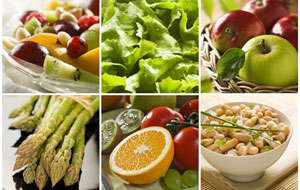Gluten-free has become a common word in the food world. It relates to the gluten-free diet and celiac disease—an inflammation in the small intestines caused by the protein gluten. According to The University of Maryland Center for Celiac Research, nearly 1 out of every 133 Americans suffers from celiac disease. Symptoms of celiac disease include abdominal pain, constipation, chronic fatigue, diarrhea, malnutrition, weakness, and other gastrointestinal problems. Gluten is found in the following grains: barley, rye, triticale, and wheat. One important aspect of the gluten-free diet is to remain aware of cross-contamination—when gluten-free foods come into contact with foods that contain gluten. This may occur at home if gluten-free and foods that contain gluten are prepared on the same surfaces and/or with the same utensils. Cross-contamination can also occur during the manufacturing process. Here is a partial list of foods that are allowed on the gluten-free diet:
- Beans
- Buckwheat
- Corn and cornmeal
- Flax
- Fresh eggs
- Fresh fish, meats and poultry
- Fruits
- Hominy (corn)
- Most dairy products
- Nuts (in their natural and unprocessed form)
- Quinoa
- Rice
- Vegetables
- Beer
- Breads
- Bulgur
- Cakes
- Candies
- Cereals
- Cookies
- Crackers
- Croutons
- Durum flour
- French fries
- Matzo
- Pastas
- Potato chips
- Processed lunch meats
- Salad dressings
- Soups and soup bases
- Soy sauce
- Vegetables in sauces

